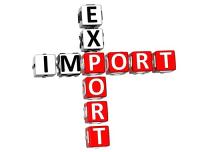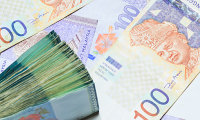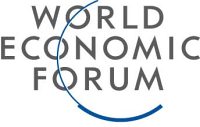
The Forbes Global 2000 is an annual ranking of the top 2000 public companies in the world features in Forbes magazine. The ranking is a comprehensive list of the world’s largest, most powerful public companies, as measured by revenues, profits, assets and market value
The ranking was first published in 2003 and it is a useful indicator for leading public companies in the world. In 2016, the world’s largest companies shows the dominance of the U.S. and China in the current global business landscape. The two countries split the top 10 spots for a third year in a row. The first 3 spots are the China’s biggest banks.
[continue reading…]

The Forbes Global 2000 is an annual ranking of the top 2000 public companies in the world features in Forbes magazine. The ranking is a comprehensive list of the world’s largest, most powerful public companies, as measured by revenues, profits, assets and market value
The ranking was first published in 2003 and it is a useful indicator for leading public companies in the world. In 2015, the world’s largest companies shows the dominance of the U.S. and China in the current global business landscape. The two countries split the top 10 spots for a second year in a row. For the first time, China’s four biggest banks own the top four spots.
[continue reading…]

Malaysia’s international trade experienced tremendous growth throughout the last 4 decades with total trade from merely RM 9.45 billion in 1970 to RM 1.4 trillion in 2014. The trade it plays a large role in Malaysian economy.
Malaysia has managed to maintain a positive trade balance, exporting more goods than it imports except in 1982, 1991 and 1994 – 1997.
In 2014, Malaysia post a trade balance of RM 83.11 billion. The highest was recorded prior to global recession in 2008 at RM143.21 billion.
The table below shows statistical figures on total export, import and trade balance since 1970.
[continue reading…]
 Bank Negara Malaysia (BNM) was established on 26 January 1959 and it is the sole issuer of Malaysian Ringgit. On 12 June 1967, the first Malaysian Ringgit issued to replace the Malaya and British Borneo dollar.
Bank Negara Malaysia (BNM) was established on 26 January 1959 and it is the sole issuer of Malaysian Ringgit. On 12 June 1967, the first Malaysian Ringgit issued to replace the Malaya and British Borneo dollar.
In 1993, the currency symbol “RM” (Ringgit Malaysia) was introduced to replace the use of the dollar sign “$”.
Since the first issuance, the value of gradually increase as Malaysian economy prospers. Do you know how much is printed Malaysian Ringgit Currency Note in circulation?
The table below show the total the of Malaysian Ringgit Note circulated in the economy since 1975 excluding RM500, RM1,000 notes and coins valued about RM2 billion.
[continue reading…]

World Economic Forum (WEF) which is based in Geneva, Switzerland recently release “The Global Competitiveness Report 2014-2015”. The ranking is based on 12 pillars and 144 criterias to measure the competitiveness for each countries.
The 12 pillars are Institutions, Infrastructure, Macroeconomic environment, Health and primary education, Higher education and training, Goods market efficiency, Labor market efficiency, Financial market development, Technological readiness, Market size, Business sophistication & Innovation.
In the report, Malaysia ranked the 20th most competitive nation among 148 countries up 4 spot from 24th out of 144 countries in 2013-2014 overtaking advanced economies country such as Australia and France. Malaysia remained the second most competitive among Asean and has improved to sixth position among 28 Asia-Pacific countries. Malaysia’s biggest improvement was in the institutions pillar.
The table below is top 25 of the ranking.
[continue reading…]



 Bank Negara Malaysia (BNM) was established on 26 January 1959 and it is the sole issuer of Malaysian Ringgit. On 12 June 1967, the first Malaysian Ringgit issued to replace the Malaya and British Borneo dollar.
Bank Negara Malaysia (BNM) was established on 26 January 1959 and it is the sole issuer of Malaysian Ringgit. On 12 June 1967, the first Malaysian Ringgit issued to replace the Malaya and British Borneo dollar.